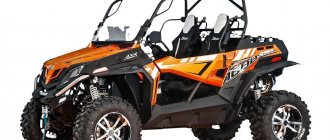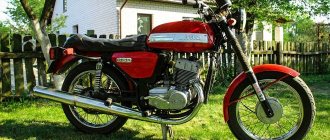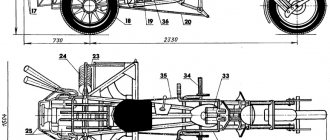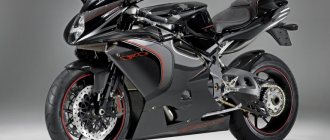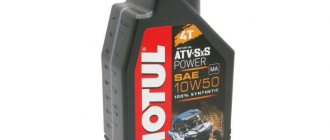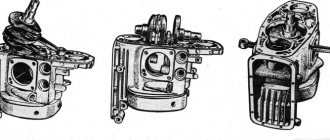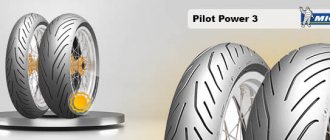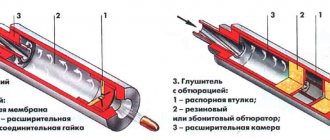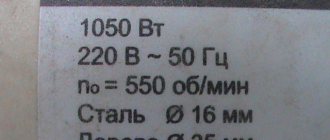Good advice
If, after completing the first 1000 kilometers, you come to the conclusion that the engine and other components of the motorcycle do not heat up much throughout the trip, you can increase the speed to 10 km/h, while not forgetting to monitor the condition of the engine. If the temperature rises, you should slow down without trying to test the strength of your new motorcycle.
Not only novice drivers, but also new motorcycles cannot withstand long trips at high speeds. To reduce engine wear while driving a significant distance, maintain the speed limit and shift gears according to the following pattern:
Check out the fuel and lubricant requirements for your new motorcycle - such data is usually indicated in the operating instructions.
After you drive the first 500 km, change the oil. During the break-in period, the oil in the motorcycle quickly becomes saturated with metal particles from engine parts, which can harm the unit. That is why it is worth changing the oil regularly and not only during break-in.
If the engine of your two-wheeled friend has been running flawlessly for 1,500 kilometers, you can start practicing riding with passengers. The only requirement is that the equipment should not be overloaded or exceed the speed limit. If there is no overheating or sagging of the motorcycle, you can further experiment with increasing the speed, but within reason.
Regularly contact the service to identify and eliminate equipment shortcomings that appeared during break-in. By following these simple rules and having a little patience, you will make riding your new motorcycle comfortable and as enjoyable as possible.
How to break in a motorcycle correctly?
Speed mode
During the first 2 thousand kilometers traveled on newly purchased equipment, you should follow a number of rules that will allow you to run-in correctly and without significant losses for your motorcycle in the future.
Before you get behind the wheel, carefully read the operating instructions from the manufacturer. Remember that at first you should not accelerate the motorcycle above the maximum permissible speed specified by the manufacturer.
Permissible load capacity
If you purchased a single-seater motorcycle, forget about riding with a passenger during the break-in period . For two-wheeled vehicles with a sidecar, there are also restrictions - you cannot transport cargo, as well as more than 1 passenger. A motorcycle at the break-in stage is not suitable for driving lessons, traveling on rough roads (potholes, mud, clay, sand), in heavy traffic, or on long steep climbs.
Engine and fuel
At this time, you should take maximum care of the engine of the new motorcycle, adding a little more oil to the fuel and mixing the resulting mixture well before pouring. For example, a mixture for a 4-stroke engine should include, in addition to gasoline, 2% oil, as well as 0.02% colloidal graphite. Before driving, it is necessary to warm up the engine, not allowing the crankshaft to make a large number of revolutions.
When operating a motorcycle, change gears in a timely manner, trying to prevent the vehicle from overloading the engine in high gears, as well as from prolonged driving at high speeds, but in a lower gear. You should also not turn on the gas fully, at least in the first 1500–1700 kilometers. During the entire break-in of the motorcycle, it is necessary to coast, periodically with the clutch disengaged.
Kilometers and distances traveled
Driving an untested vehicle for a long time without stopping is unacceptable. To maintain the condition of the engine and prevent it from overheating, you should proceed according to the following scheme:
- Up to 100 km – stops after every 10 km traveled;
- 200–1000 km – every 25 km.
It should be noted that after driving the first 1000 km, you can exceed the speed of movement on your motorcycle indicated as the maximum in the instructions, and after 3 thousand kilometers the running-in is actually completed, and you can already start riding for fun.
Despite the fact that after break-in the maximum speed increases, it is necessary to develop it with caution. For example, you cannot travel long distances at high speed without harming the engine. In this regard, it is worth adhering to the rule - smooth acceleration and average speed.
What is break-in?
Among motorcyclists, the first 1.5–3 thousand kilometers are considered to be the break-in period of a new motorcycle, during which all equipment units grind against each other, and therefore it is especially important to observe the speed limit, take into account overheating of parts and not drive the engine speed too high.
If, after purchasing a new or used motorcycle that has undergone a major overhaul, running-in does not occur, then the likelihood of rapid wear of parts and components of the equipment is very high.
During the break-in period, many processes occur in new equipment that are designed to reduce friction losses, wear of some units, and also increase the service life of the motorcycle as a whole:
- The chains stretch slightly;
- Threaded connections, gaskets, control cable sheaths, etc. settle;
- Some of the bolts loosen slightly;
- There is a freer movement of the levers responsible for clutch and braking;
- The components of the engine-transmission unit can become quite hot;
- A slight leak of lubricant may appear in the oil seals;
- Acceleration and engine performance may be poor.
